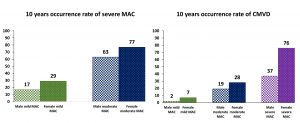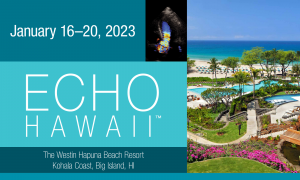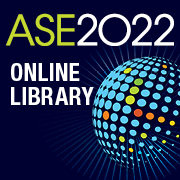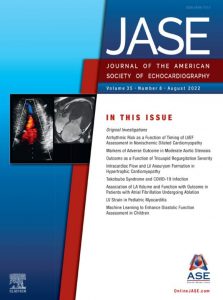The September JASE includes, “Natural History of Mitral Annular Calcification and Calcific Mitral Valve Disease,” from Drs. Willner, Burwash, Beauchesne, Chan, Vulesevic, Ascah, Toutinho, Promislow, Stadnick, Chan, Mesana, and Messika-Zeitoun.
Dr. Messika-Zeitoun noted, “Mitral severe annular calcification (MAC) and calcific mitral valve disease (CMVD) are common and progressive diseases, but their natural history remained poorly defined. In this large cohort of patients with paired echocardiograms, we showed progression to severe MAC was common and frequently results in CMVD with higher progression rates observed in women suggesting sex-differences in MAC/CMVD pathophysiology. The challenges posed by MAC for both transcatheter and surgical interventions and the observation that most patients with CMVD are left conservatively managed irrespective of their functional status underline the importance of better understanding the pathophysiology of MAC and CMVD and of developing effective preventive medical therapies.”
Two other clinical investigations also look at echocardiography in mitral valve disease. Additional clinical investigations explore strain echocardiography in aortic stenosis, the value of echocardiography in evaluation of dyspnea, 3D echocardiography assessment of atrioventricular coupling in infants and children, and open-source software used in the visualization and quantification of the unrepaired complete atrioventricular canal valve in children. A Special Article, “Practical Points for Echocardiography in Cardiac Amyloidosis,” was created by the ASE Amyloidosis Task Force as an accompaniment to the recently published multisociety Expert Consensus Recommendations for Multimodality Imaging in Cardiac Amyloidosis. A review article looks at cardiac imaging for diagnosis and management of infective endocarditis, and this issue also includes Dr. Denisa Muraru’s 22nd Annual Feigenbaum Lecture that was given at the 2021 ASE Scientific Sessions.
A brief research communication, editorials, and correspondence round out the issue. The President’s Message from Stephen H. Little, MD, FASE, with guest writer David H. Wiener, MD, FASE, elucidates ASE’s initiative to create living guidelines. The continuing education and meeting calendar outlines a multitude of learning options near and far.





